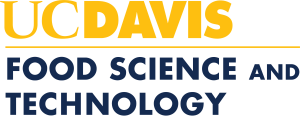A. Student Learning Outcomes - listed on syllabus as “Course Objectives”
- To describe food processing in terms of unit operations, both conceptually and in the pilot plant
- To understand the use of mass and energy balances for food processing
- To gain experience with common food processing equipment at the pilot plant scale
- To gain proficiency in the use of computers (i.e., spreadsheets) to solve food science problems
- To work effectively in teams
- To apply critical thinking skills to new food processing situations
B. Tools to addresses outcomes - listed on syllabus as “Grading”
Lab conduct & safety: 20%
Lab reports: 80%
C. Brief summary of assessment results to date
FST 110L Food Processing Laboratory exercises provide practical application of the theoretical concepts acquired in the associated lecture course, FST 110 Food Processing. Both courses are restricted to Food Science majors and are taken in the Fall quarter of Year 4 after completion of prerequisites: one year of calculus, one year of physics, and FST 50 Introduction to Food Preservation (lecture/lab).
FST 110L has been offered twice in our recently revised curriculum. To focus on quantitative aspects of the course, laboratory format has been streamlined (e.g., computation-oriented). Both effort and performance are evaluated. Lab reports are the performance evaluation at 80% and are graded “straight scale”; lab conduct & safety are the effort evaluation at 20% of the course grade. In Fall 2013 (most recent offering) the average course grade was 94.4 ± 6.4 (one standard deviation).
In the first year of development of the laboratory exercises, the survey below was given to students.
Survey to Improve Laboratory Experiences
Please rate the success of the laboratory experiences in term of Learning Outcomes (that begin “The student will...”)
PL1- flow diagram of the brewery
The student will be able to describe the processing of beer in terms of unit operations.
PL2 – sieving malt
The student will be able to apply statistical principles to Food Science applications
PL3 – mass and energy balance on plate and frame heat exchangers
The student will be able to analyze unit operations using mass and energy balances
PL5 – work with pipe fittings, examine pumps
The student will be able to evaluate pipe fittings
PL6 – measure density and viscosity
The student will be able to use force balances to measure physical properties
PL7 – design/build a piping system to meet specific criteria
The student will be able to design/ build a simple piping system
